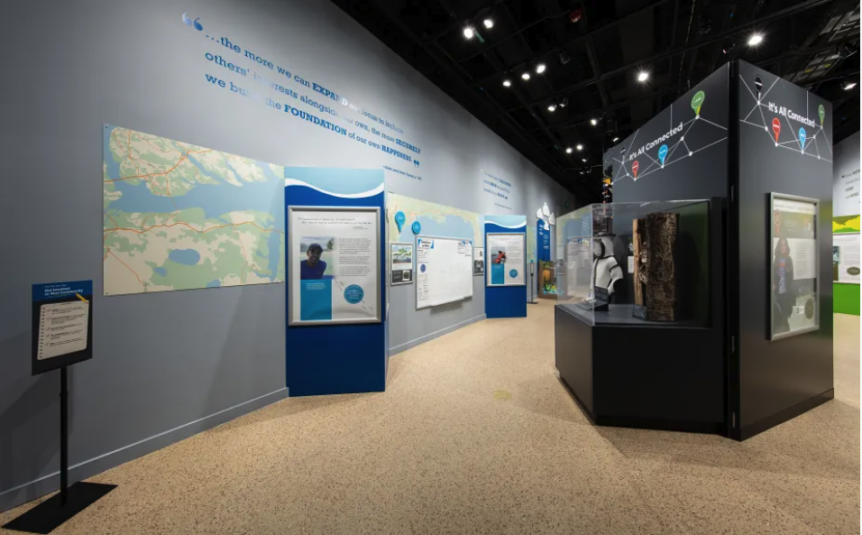Published in Santa Cruz Sentinel: October 5, 2023. By JESSICA A. YORK
Visiting the Smithsonian National Museum of Natural History in his native Washington, D.C. this summer, Paul Goldberg and his family made a smart turn at the 11-ton elephant specimen looming over the grand rotunda and, there, found a piece of home.
Amidst an interactive temporary exhibit titled “Our Places: Connecting People and Nature” sits a panel-style storyboard depicting images from Santa Cruz’s Homeless Garden Project, where Goldberg serves as development director. In the area with the subheading of “Cultivating Community” are photographs of two of the 3.5-acre Natural Bridges-based organic farm program’s graduates and other images, plus a scannable QR code leading visitors to the organization’s website. An LED slideshow of nature photographs at the room’s entrance also includes some of the organization’s farm images.
“I was thrilled to be able to go while the show was up. I knew it was happening while I planned the trip,” Goldberg said. “You’re led and you’re prompted to things in your own life. But then HGP is featured as like, ‘Here’s a great example of what happens when communities do positive things around land.’”The Homeless Garden Project, off Shaffer Road in Santa Cruz, provides transitional employment, job training and support services to people who are experiencing homelessness. The related organic farm and a retail enterprise help support the effort and offer community service opportunities.
Homeless Garden Project Executive Director Darrie Ganzhorn said she was able to get a sense of the exhibit during Goldberg’s trip when he used Facetime to show her around. Ganzhorn said she hoped the organization’s inclusion in the exhibit serves to spread its message and provides a positive and effective model of addressing homelessness.
“One of our core values is we believe in the capacity of all individuals for growth and renewal,” Ganzhorn said. “I feel that our work is such a strong testimony that people can make life transformations and be successful and that it’s so important to provide people opportunities to make those transformations.
The exhibit and its link to the Homeless Garden Project’s website also invites those in other areas to reach out to learn about and even duplicate the group’s model, Ganzhorn said. With or without the help of the Smithsonian exhibit, some 95 individuals from around the country have reached out since January 2021 asking for help in getting their own program started, Ganzhorn said. The organization holds monthly Zoom video meetings to offer a primer on their efforts, and is close to releasing a full-fledged how-to manual, she said.
The Smithsonian exhibit, in place from July 2022 through July 2024, asks visitors to contemplate their place in nature, asking each “Where is your special place?” and to focus on reconnecting on the land, restoring along the water, thriving close together and cultivating community. The museum also hosts an abbreviated online webpage dedicated to the exhibit that invites visitors to pinpoint their favorite areas on a map along with a short explanation. A short video from one of the Homeless Garden Project’s graduates is included online.
Those interested in learning more about the Homeless Garden Project can visit the nonprofit online at homelessgardenproject.org and purchase tickets for its upcoming annual Fall Sustain Supper, set for 3-6:30 p.m. Oct. 28. The dinner offers a four-course meal cooked by local chefs, along with keynote speaker Charles Duhigg, the bestselling author of “The Power of Habit.”


